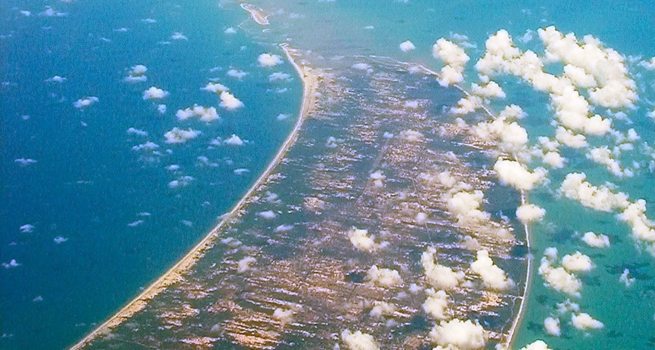Ram Setu
Context
Recently, Ram Setu has been at the centre of several controversies and legal cases.
About The Ram Setu
- It is also known as Adam’s Bridge.
- It is a 48-km chain of limestone shoals between Rameswaram on India’s southeast coast and Mannar Island near Sri Lanka’s northwest coast.
- The structure has significance in both Hindu and Muslim mythology.
- While Hindus believe this is the bridge (setu) built by Lord Ram and his army to cross to Lanka and fight Ravan.
- As per Islamic legend, Adam used this bridge to reach Adam’s Peak in Sri Lanka, where he stood on one foot for 1,000 years in repentance.
- Scientists believe Ram Setu is a natural structure formed due to tectonic movements and sand getting trapped in corals.
About Sethusamudram project
- The depth of the sea along the bridge varies between 3 feet and 30 feet, making navigation by sea-worthy vessels impossible in this stretch.
- At present, ships bound for India's eastern coast have to circle around the entire island of Sri Lanka to reach Tuticorin, Chennai, Vizag, Paradip and other ports.
- Therefore, a project titled Sethusamudram Shipping Canal Project was mooted by the Government of India.
- In 1997, the Government decided to go ahead with the project but only finalised it in 2005.
- The successful completion of the project is expected to cut travelling by about 350 nautical miles and will save 10 to 30 hours' sailing time.
- Plans were also drawn up to develop 13 minor ports in India, and fishing harbours and other infrastructure in both India and Sri Lanka.
Ecological arguments against the project
- The Sethusamudram project has been opposed on environmental grounds.
- Some claim that it will harm marine life, and that dredging of the line of shoals will make India’s coast more vulnerable to tsunamis.
- In March 2018, the Centre told the Supreme Court that the Ram Setu will not be affected in the execution of the Sethusamudram Shipping Canal project.

